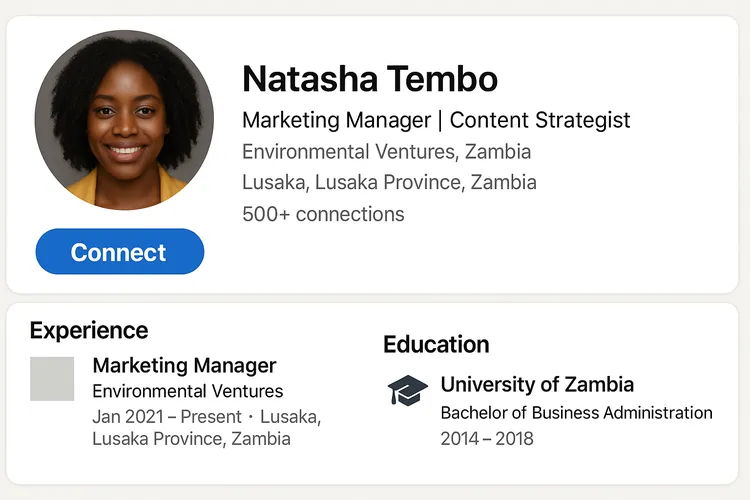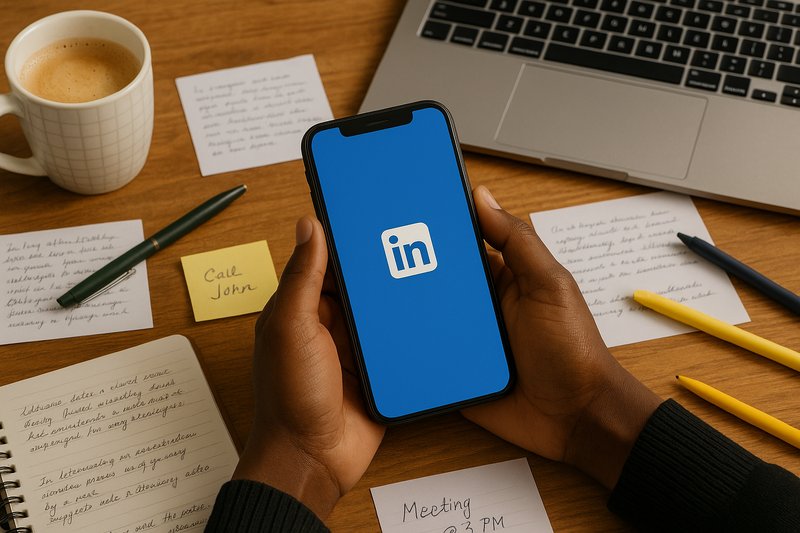It's not catfishing if it gets you the job on LinkedIn, is it? LinkedIn is a world in which people put their best foot, or rather best, rather exaggerated ‘perfected’ version forward. Let’s be honest, despite being wrapped in swathes of professionalism, LinkedIn and LinkedIn jobs are still social media by any other name, with the off chance of getting hired based on the number of connections (ahem, followers) you have. But on a serious note, can LinkedIn Jobs land you your dream job? Connect you with prospective employers and is it effective in Zambia? I set out to investigate.
Step 1: Recruitment or How to Sign Up for LinkedIn Jobs in Zambia
The trick to spreading any mindset, cultish or otherwise, is to make it look fun. This was the thought running through my head as I pressed the ‘Join’ button on LinkedIn. The bold font urged me forward, selling me on the notion that work-based social media would be enjoyable. The button was a shade of blue eerily similar to Facebook’s, but one that I hoped would leave me less concerned about the state of the nation and the mental state of its citizens.
The joining screen of LinkedIn only asks a few simple questions and promises that lurking behind the input of your name and job title, lie connections that could significantly raise employment ranks and consequently your tax bracket. Despite identifying as a mostly functioning adult with the social media addictions prevalent in persons whose puberty coincides with the launch of smartphones, LinkedIn is a cult I have never considered joining.
First and foremost, I am a creative (African translation: embarrassment to my bloodline), and the skills and connections needed to thrive in the creative industry are not the kind best made within the confines of a headshot taken in business casual with your braids pulled into a tight ponytail. But with a constantly growing user base in Zambia, estimated to be as much as 800,000 as of 2024, it seemed only right that I succumb to peer pressure, at least for the culture.
Key Takeaways
-Visit linkedin.com and click “Join”.
-Fill in your name, email, and job title (aspirational or otherwise).
-Don’t overthink it. Everyone’s faking it a little.
Step 2: Catfishing or Setting up Your LinkedIn Profile
With this in mind, I told the first untruth of the experience: on the sign-in screen, still blue, still beckoning me to join the world of the conventionally productive, under the job title I typed “Project Manager”. I minimised the tab for a second to perform a quick Google search about the role of project managers in companies and, with only slightly less confusion than I had before, I returned to the sign-in screen.
But before I pressed next, I was hit by an inkling. I had described myself as a project manager, even though I wasn’t, because it was far more practical, far more convenient, and behind the guise of the screen, I could do it. What if, instead of typing my name, I backspaced the alliteration of M’s that made up mine and put in something else, far more practical and far more convenient?
In my short time in Zambia, despite my love for the sound of it, my first name has been one of my biggest inconveniences. If you know a “Musonda”, hug them tight, they've earned it. As a collective, we are fighting for our lives in contact lists and shopping malls. Our heads simultaneously turn 90 degrees at the sound of the name in Shoprite, only to discover a babbling baby is the recipient of this address who will no doubt grow up to share in the collective trauma of Musonda’s everywhere.

With the far less popular, BUT practical name of “Natasha Tembo” now claimed as my own, I forged ahead. From here on, LinkedIn seems more interested in the information that will get you the next job. My education, experience, and skills were requested and I was asked to upload a profile picture. After a quick Google search, I learned that the selfie I had taken in a cocktail dress at Grandaddy’s was sadly, inappropriate. The pictures that work best on LinkedIn are “high-resolution solo images in business attire with simple backgrounds”. To fill in the rest of the profile I was given the option to put into Natasha’s skills, as well as any more information I would want the professional world to know about her in a little “about me section” which includes the options of adding a headline and a summary.
Key Takeaways
-Choose your target job market.
-Create a compelling ‘About Me’ bio with a headline and summary—highlight your experience, skills, and aspirations.
-Add previous work experience, education, and key skills.
-Use a professional photo on a simple background.
-Google and research any job title you want to claim to help narrow down your search.
Step 3: Indoctrination or Find People you Know and Build your Network
With Chat-GPT steering us for emotional support, I completed the information about Natasha so that employers would be able to view and see if she was suitable for any of their positions. Like an ecosystem of fish in a pond, LinkedIn is a network that functions on connections and recruiters. In this habitat employers are called recruiters and can post job openings you can then apply for, there is also the chance of them messaging you and inviting you to apply if your profile fits their requirements. A connection is a person you’ve added to your LinkedIn network, you can see each other's updates and they can provide verified recommendations or endorsements for your skills directly on LinkedIn.
On the next screen, I was met with a suggestion of popular LinkedIn users to follow. Much to my surprise, even this app had influencers, though just how well they could monetise it remained uncertain, considering their audience consisted mainly of people either looking for a new job or trying to advance in their current one.
The first post I was shown was a celebratory post where an individual was commemorating their first anniversary at X-company. There was a smile on his face, but I saw the death in his eyes. I read the subtext and, in my brain, translated what he wanted to say:
"One year since I started living for the weekends."
"One year I lost the will to live but gained a few points back on my credit score."
I liked his post, hoping he would see what I meant too.
After an array of Bobs and miraculously pressed shirts, I stumbled upon my next post of interest: “5 Essential Questions to Ask Yourself Before Applying for a Job.”
My short time on the app had already cemented in my mind that time was money. And for the sake of Natasha Tembo’s career trajectory in project management, there was no time to be wasted when I knew the answers myself:
-Can I afford to be unemployed?
-Can I afford to eat?
-Will I be able to survive the streets and the wildlife of Lusaka?
-Is my landlord an understanding man?
-Will my dating prospects survive my unemployment?
Key Takeaways:
-Follow people in your field.
-Add connections to build credibility (aim for at least 50 to start).
-Engage with posts (likes and comments can help you show up in feeds).
-Use featured articles and trending questions to refine your career goals.
Step 4: Climbing the Ladder or How to Apply for Jobs on LinkedIn
With these questions looming in my head and my fear of Natasha’s imaginary economic stability growing, I frantically headed to the job search feature. The website gives the option to search for jobs in your area or remotely by using keywords. LinkedIn minimises the time spent tediously re-attaching CVs and references to email after email with an “easy apply” button on a lot of postings that allow you to apply for a job with a few clicks. With the franticness that minutes before I had used to judge LinkedIn posters, I began to apply for positions that would further ensure Natasha’s food security. Time was now money, money was now time, network was net worth and for a project manager like her, LinkedIn was convenient.

A week or so after dismantling my persona, LinkedIn still sat in a corner of my home screen. I was wallowing in the joys of unproductivity when a ting sounded and a pop-up foreign to me emerged on the screen, addressed to none other than Natasha Tembo. My hard work had paid off, Natasha was off the streets and into corporate, or at least had an interview opportunity to get there, and like a toddler controlling a doll I had made her look good enough to get there. The beauty of LinkedIn is that, just like all of social media, who you present yourself as on the screen is believed.
Key Takeaways
-Use the “Jobs” tab to search for openings by role, location, or remote availability.
-Filter listings by experience level, company, or application method.
-Use “Easy Apply” to speed up the process and avoid uploading documents repeatedly.
-Set up job alerts so you never miss an opportunity.
Apply widely and early. You never know who might take a chance on you.
LinkedIn might be social media in disguise, but it works if you do. Whether you’re job-hunting in Lusaka or Lagos, with a bit of catfishing, curated connections, and an Easy Apply spree—you might just find yourself with a job offer (or at least an interview). At least, Natasha did.








